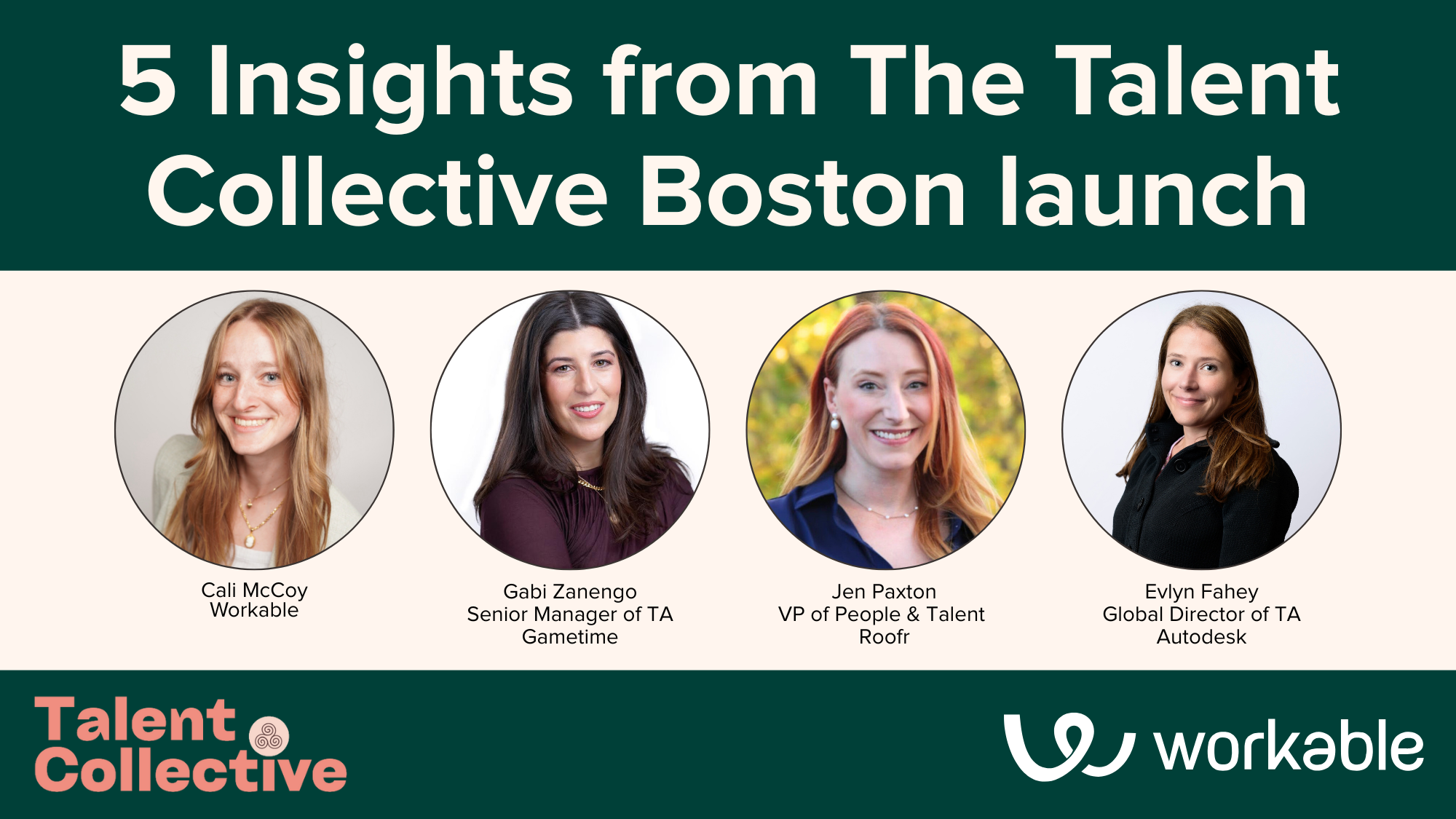Why you should consider non-traditional candidates
For some professions, career paths are sort of a given, almost pre-defined. For example, if you want to be a doctor, you’ll go to med school, complete a residency program and get your license - you’re ready to practice medicine. But, for other professions, the path is not that clear. What do you study if you want to go into sales? Or, if you’re working as an accountant, does this mean you will do this job for the rest of your life?

Look at it from a different perspective: if you want to hire a doctor, the first thing you’ll do when screening resumes is to disqualify those who don’t have a medical degree or don’t have enough relevant experience. Fair enough. But, if you want to hire a salesperson or an office manager, candidates’ academic and professional backgrounds are not necessarily valid screening criteria – or the only one at that.
Consider their potential, not their past
Let’s have a quick quiz. Say you want to hire a graphic designer. You have received applications from the following candidates:
- Anastasia obtained her BSc in Graphic Design from the Rhode Island School of Design with a 3.9 GPA.
- Jonas has worked the past 3 years at a design agency and has no college degree.
- Megan holds a design degree from the University of Texas. To afford her studies, she worked part-time while at college and graduated after 6.5 years.
- Lukas is 35 years old and currently working as a Customer Support Specialist. Two years ago, he decided he wanted to pursue his passion, so he attends online courses on graphic design after work. He has already built a portfolio with his sample designs.
With only this info at hand, can you say with confidence who can do the job and who can’t? At first glance, the obvious choice is probably Anastasia; she has a stellar GPA from a well-known design school. But have you considered what a non-traditional candidate like Jonas, who has all this practical experience, could bring to the table?
Megan is also a strong candidate, as she is a hard worker and demonstrates a real knack for multitasking. And Lukas is the kind of employee who’s personally motivated by everything about design, proactively fills any skills or knowledge gaps and puts his best self at work.
So, on second thought, these are all potential hires, but for different reasons. You can’t be sure whether they are indeed good candidates unless you interview them and learn first-hand about their experiences and career motives. You need to see how they’ll perform in an assignment that simulates one of your work projects. In other words, you need to assess these non-traditional candidates using strictly job-related criteria.
We’ve somehow decided that employment and skills gaps, unusual educational backgrounds or deviations from linear career paths are red flags in candidates. But, maybe it’s time to stop thinking that all employees (or all people) fit the exact same pattern that we have in mind. Each person is unique; we can’t judge candidates based on their life decisions. We should only judge them based on whether they can do this particular job right now, regardless of how and why they got here. As Liz Ryan, famous author and founder of the Human Workplace, and opera singer among other things, explained it in her article:
So are you an opera singer, or an HR Manager?” people would ask me. I said “Both. How awful to be only one thing!
The linear career path (a four-year degree from a good university and then climbing the ladder) is outdated. If we wanted to illustrate modern career paths, we’d draw horizontal lines for employees who make career changes and transfer to new departments, circles for employees who use their spherical knowledge and take up generalists’ roles and wavy lines for employees who happily take a more junior position if it’s in an industry they’re passionate about.
The hiring process should have a fresh design, as well. It’s not about having a checklist of requirements and finding the one person who meets all the criteria in that list. Each open role is like the summit of a mountain; you know where you want to go but there are multiple ways to get there.
Diversity is a choice – not a ‘nice thing to do’
It’s not about making an exception and hiring one great candidate despite not having relevant work experience. It’s about proactively looking to hire people who come from various professional and academic backgrounds. Why? Hiring non-traditional candidates helps you:
1. Boost your profits
Various studies prove that diverse teams perform better, are innovative and bring in more revenues for their companies. And when you’re flexible with your hiring criteria and remove biases around age, gender and disability, you can build these diverse teams. For example:
-
- when you don’t place huge emphasis on Ivy League schools, you can recruit candidates who come from different ethnicities and social classes and have the right skill set but couldn’t afford to or don’t historically attend these schools;
- when you aren’t fixated on finding people with traditional career paths, you open up the opportunity to hire more women in male-dominated professions and vice versa; and
- when you’re open to hiring people who’ve made a career change, you don’t reject candidates because they seem ‘too old’ for a specific job, as you come to realize that they’ve invested time to work towards a second degree in the field they want to pursue.
2. Expand your talent pool
If you’re only looking for a very specific candidate profile, your hiring process could suffer – both time and cost-wise. Everybody wants to hire a candidate who looks great on paper and meets all the criteria. However, this means that you compete against many companies for this ‘perfect candidate’ and you might end up having to offer a higher salary to win them over, or you might have to start the hiring process all over again if they go with another offer.
On the other hand, when you cross off the requirements that aren’t necessarily needed, like a 4-year college degree, you open the door for more people to apply; people who may lack the typical qualifications, but still have the skills and the drive to perform successfully.
3. Connect with customers with equally diverse backgrounds
Your customers are diverse; and that’s why you should be, too. For example, a restaurant chain could hire a marketer who doesn’t have a degree in marketing but has previous industry experience in a different position. This person can better relate to customer pain points because they have first-hand experience. They can also recommend effective advertising campaigns that connect with the target market because they, themselves, have been in the trenches.
Likewise, if you’re a multinational company, don’t dismiss candidates who took a career break to travel the world; they could actually be your competitive advantage if they have spent time in places where your customers are and may even speak a few foreign languages, too.
4. Get fresh ideas
The more diverse your team is, the more unique and unexpected ideas they’ll bring in the table. The key here is ‘unexpected’. Employees with unconventional backgrounds will contribute in areas that are beyond the scope of their position and can take a multilateral approach to a situation, offering solutions to problems you didn’t even know existed.
For example, Chris, one of Workable’s sales development representatives, was previously working as an interior designer. That’s why during events, he always helps set up our booth sharing great tips on how to make it functional and attractive. And Paul, a sales manager with a sports background as a national squash player, knew how to coach and inspire his team members both after a win or a loss.
“Should I invest in people with flaky career paths?”
That’s a valid concern. Someone who frequently changes jobs might leave your company, too, soon after you’ve hired them. Or, another employee, given the opportunity, could jump to a new role that’s closer to their field of studies.
If you come often across these scenarios, you need to examine the problem at its root; it’s not the candidate, but rather, your hiring process. When interviewing candidates, focus more on candidates’ motives and professional goals. Do they align with what you can offer? Also, be very specific and transparent about what the job entails before you bring them on board; if it’s not what they’re looking for, you’ll both realize it and can fix the problem before it’s too late.
Yet, no matter how carefully you hire employees, some of them will still quit. It’s time to think a little bit more about the reasons why they leave. “Moving to a job closer to my field of studies.” Is this what they told you or did you just assume, knowing their background? And if they told you so, are you sure it’s the only reason or does it happen to be a convenient excuse?
People leave jobs for all kinds of reasons. You can’t always predict or avoid that. They also stay where they feel valued and where they grow. And this is where you can actually do something. Foster a healthy workplace where employees develop their skills, build upon their existing knowledge and are evaluated based on their current accomplishments as team members in your company – not based on their professional or academic past.




